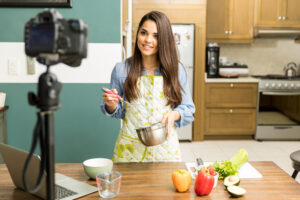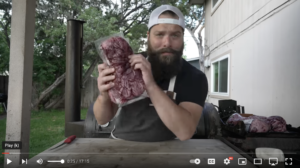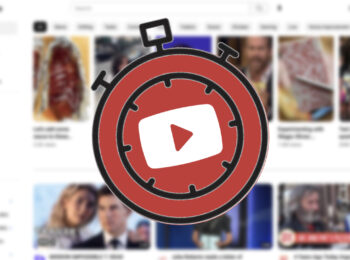Ideas
Breaking the Rules: Cooking Videos on YouTube and Social Media
Cooking videos seem to be an outlier in online video trends. While platforms increasingly favor shorter and shorter videos, recipe tutorials are getting longer…and more popular. How can brands capitalize?
by K. Ryan Jones, co-founder

We’ve had a lot of experience producing food and cooking content for both TV and online audiences. I, personally, am an avid consumer of barbecue tutorials (I’m looking at you Chud and Mad Scientist). I’ve probably watched hundreds of hours of various raw meats being slowly smoked to perfection. And I’m not alone. The world of cooking videos on YouTube is growing and changing rapidly. As food brands and influencers look for new ways to engage with their audiences, cooking videos have become an increasingly popular tool.
The popularity of cooking videos on YouTube has seen a huge surge in recent years. People are always looking for new and interesting recipes, and these videos offer them the perfect opportunity to see how a dish is made in real-time. Many people also enjoy watching cooking videos as a form of entertainment, as they can be enjoyable to watch even if you don’t plan to make the dish yourself.
One of the most notable recent trends in cooking videos is their length. While most YouTube videos tend to be relatively short, cooking videos tend to be longer, often lasting between 5 and 20 minutes. This gives us aspiring cooks the opportunity to get a comprehensive look at the entire process, from start to finish. Food brands and influencers have also started using this extra time to incorporate additional elements into their videos, such as helpful tips and tricks, product placement, and even interviews with other influencers. The main takeaway, though, is that food and restaurant brands have the opportunity to get more time in front of their potential customers, and attention span is the most valuable commodity in the online economy.
 In terms of style, cooking videos come in a variety of forms. For a long time the trend was short videos with the “bird’s-eye view” of a dish being assembled, a-la Tasty, but that seems to have fallen out of fashion in favor of on-camera talent in their personal kitchens or backyard spaces. There are notable personalities, like Gordon Ramsey or Emeril Lagasse, but there have been many instances of amateur enthusiast home cooks rising to internet stardom. For brands, a collaboration with the celebrity chefs might be valuable for name recognition, but the online cooking star offers other advantages: they’re cheaper, have huge followings, and they know how to engage with an online audience.
In terms of style, cooking videos come in a variety of forms. For a long time the trend was short videos with the “bird’s-eye view” of a dish being assembled, a-la Tasty, but that seems to have fallen out of fashion in favor of on-camera talent in their personal kitchens or backyard spaces. There are notable personalities, like Gordon Ramsey or Emeril Lagasse, but there have been many instances of amateur enthusiast home cooks rising to internet stardom. For brands, a collaboration with the celebrity chefs might be valuable for name recognition, but the online cooking star offers other advantages: they’re cheaper, have huge followings, and they know how to engage with an online audience.
Overall, cooking videos on YouTube are an ever-evolving form of content, and food brands and influencers are constantly finding new ways to engage with their audiences through them. As the trend continues to grow, we can expect to see even more innovative and entertaining cooking videos in the future.




